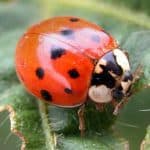Votre panier est actuellement vide !

The Asian ladybug
Asian ladybugs are almost identical to our native ladybugs, but their coloring and spotting vary greatly. They are much more resistant to the cold and have no natural predators. When they feel threatened, they secrete a foul odor. They are larger than domestic ladybugs (5-8mm) and have « M » shaped spots on the thorax.
Latin Name: Coccinellidae
Description:Asian ladybugs are almost identical to our native ladybugs,but they have widely varying hues and spots. They are much more resistant to cold and they have no natural predators.When they feel threatened, they secrete a foul odor.They are larger than the domestic ladybugs ( 5-8mm)and they have « M » shaped spots on the thorax.
Reproduction:It is adapted to live in many environments so they’re well adapted and it multiplies quickly. It competes with native species and even feeds on their larvae.
Habits:Often in October, thousands of individuals gather and go to shelters to spend the winter ( hollow trees, leaf piles, attics of houses). The Asian lady beetle is not dangerous for humans but its foul smell can be annoying in houses. It is a very voracious insect, an adult can eat 90 to 270 aphids per day. It is quickly becoming the most abundant species of lady beetle, and threatens the balance of ecosystems. It can attack fruits such as grapes and it can reduce the quality of the harvest.
Prevention:It is necessary to block the openings at the level of the structure of the building andit is necessary to caulk well around the doors and windows. In cases where a house is invaded by several hundred individuals, treatments can be applied but they should be administered by specialists to ensure that all sources of infestation are treated.